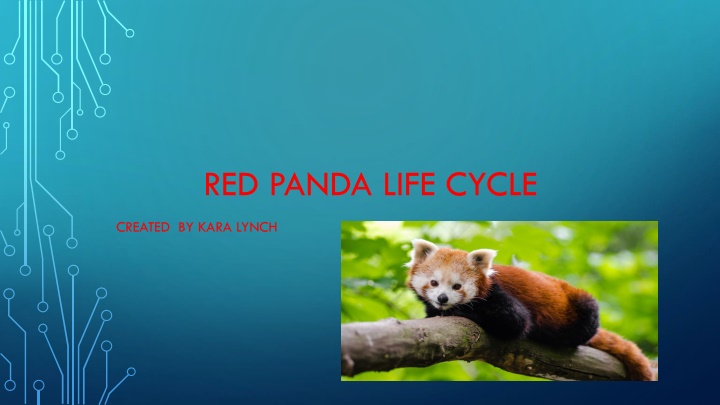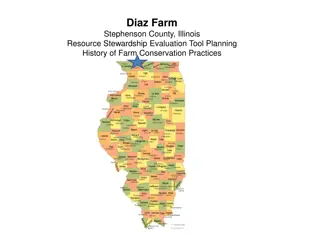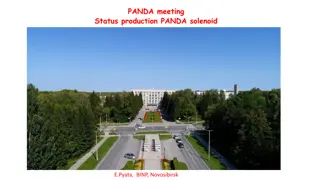Red Panda Life Cycle and Conservation Efforts
Red pandas, solitary animals, engage during mating season from January to March. Females give birth after 112 to 158 days, rearing cubs until adulthood. Conservation efforts are crucial due to their vulnerable status and habitat destruction in South Asian forests impacting the ecosystem and human livelihoods.
Download Presentation

Please find below an Image/Link to download the presentation.
The content on the website is provided AS IS for your information and personal use only. It may not be sold, licensed, or shared on other websites without obtaining consent from the author.If you encounter any issues during the download, it is possible that the publisher has removed the file from their server.
You are allowed to download the files provided on this website for personal or commercial use, subject to the condition that they are used lawfully. All files are the property of their respective owners.
The content on the website is provided AS IS for your information and personal use only. It may not be sold, licensed, or shared on other websites without obtaining consent from the author.
E N D
Presentation Transcript
RED PANDA LIFE CYCLE CREATED BY KARA LYNCH
BIRTH Red Pandas are solitary and typically interact during mating season. Which is between January and March with more than one partner. The female collects brush and leaves a few days before giving birth to function as a nest. After 112 to 158 days of gestation, the female gives birth to one of four cubs. Each cub s weight ranges from 3.9 to 4.6 OZ.
ADOLESCENCE A Red Panda mother spends 60 to 90 percent of her time caring for her cub s during their first week with task such as feeding and grooming. She can recognize each cub by his scent and she frequently moves the cubs among several nests. At about 18 days, the cubs can open their eyes. The mother spends less time in the nest then and tends to the cubs only every few hours. By 90 days of age, the cubs achieve adult coloring and fur and begins to venture out of the nest and eat solid food. They are fully weaned at 6 to 8 months old but stay with their mother until her next litter is born.
ADULTHOOD Red Pandas are able to reproduce at 18 months old and are fully mature at 2 to 3 years old. They have a slow rate of reproduction and a great deal of difficulty recovering from population declines. The males rarely help raise the young. The average life span of a red panda is 8 to 10 years, but red pandas have reached 15 years of age.
LIFESTYLE Red pandas typically live alone but have been know to from small family groups. They are territorial, creating home range of one to two square miles. Nocturnal, they usually sleep in trees during the day and hunt at night. They are omnivores, mainly eating bamboo. They also eat fruit, grasses, mushroom, egg, insects birds and fish
FUTURE The red panda is classified as vulnerable in the international union of nature and nature resources Red list of threatened species. It also convention on international trade in endangered species of wild fauna and flora s appendix 1,which list animals that are most endangered. The species is considered endangered in china, too, and protected in Nepal, with its population decline. Protecting the red panda goes hand in hand with protecting its habitat. The animal decrease in population is tied with habitat destruction of south Asian forest, which provide clean air and water to 1 bullion people.























